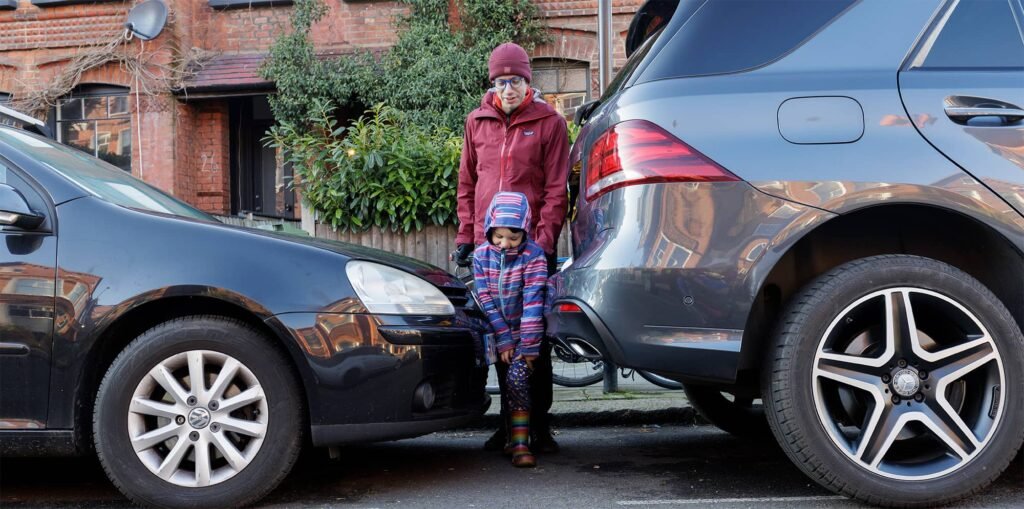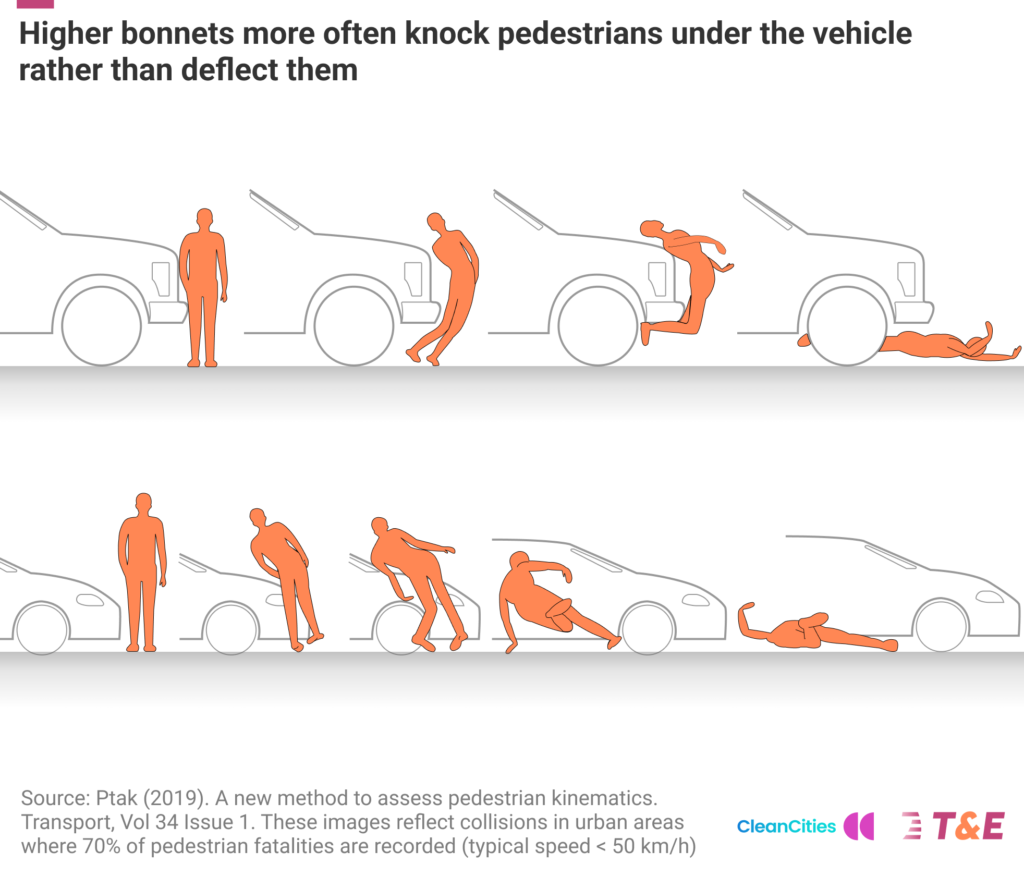Ever-higher: the dangerous rise of bonnet height, and the case to cap it
Overview
Bonnet heights in new cars are rising – and so are the risks.
Our research with T&E shows that average bonnet height in newly-sold cars is increasing by half a centimetre (0.5 cm) a year, reaching 83.8 cm in 2024, up from 76.9 cm in 2010. Yet, there are still no EU or national laws to limit the ongoing rise.
High-fronted SUVs are a growing threat to public safety, especially for children. With no clear benefit and increasing evidence of harm, urgent action is needed.
T&E and the Clean Cities Campaign call on the EU and UK to cap bonnet height at 85 cm for new cars from 2035 (subject to further study). Capping bonnet height is a simple, effective way to reduce harm and curb the rise of oversized vehicles.
Why high bonnets are more dangerous
Taller bonnets increase the severity of crashes. They strike pedestrians higher on the body, often hitting vital organs and increasing the risk of being knocked down or run over. Lower bonnets tend to hit the legs, making severe injuries less likely.
High bonnets also reduce drivers’ visibility. Blind spots in front of the vehicle can completely hide children, especially when parking or turning at junctions, increasing the risk of collisions and near-misses.
According to Belgian crash data, a 10 cm increase in bonnet height raises the risk of death by 27% for pedestrians, cyclists, and other vulnerable road users. In crashes with regular cars, higher-bonneted SUVs and pick-ups impose a 20–50% greater risk of serious injury.
Related content

Carspreading: when big cars make our cities smaller
Carspreading is taking over our cities. Join our campaign to highlight the growing problem of supersized SUVs.


